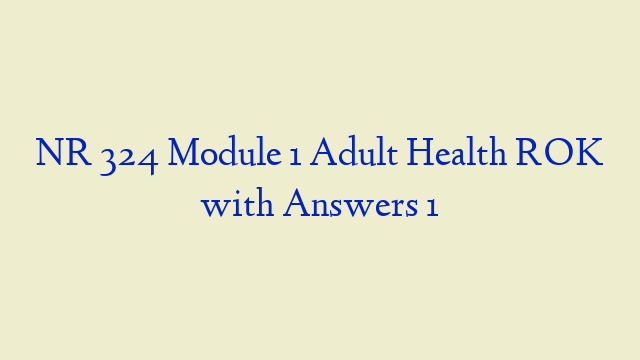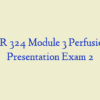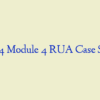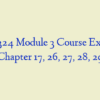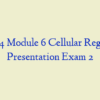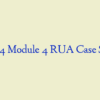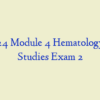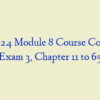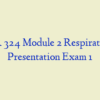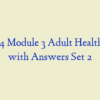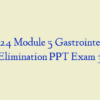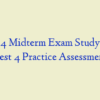Description
NR 324 Module 1 Adult Health ROK 1
- Describe the composition of the major body fluid compartments.
- Describe the laboratory normal values, clinical manifestations, assessment priorities (i.e. Neuro, Cardiac, cardiovascular, etc.) & nursing collaborative management of the following imbalances.
- Explain the difference between Chvostek’s sign and Trousseau sign when assessing a client with a calcium imbalance?
- Describe what causes Fluid volume deficit, (a) the assessment, (b) nursing management, (c) nursing education.
- Describe what causes Fluid volume excess, (a) the assessment, (b) nursing management, (c) nursing education.
- Explain the common clinical manifestations, and nursing management of the following acid-base imbalances
- Describe the composition (give examples) and reasons for use of common IV fluid solutions.
- Explain how to administer IV KCL (potassium), What guidelines must the nurse follow?
- Discuss the types and nursing management (maintenance) of commonly used central venous access devices.
- Identify the normal laboratory diagnostic ranges for interpreting acid-base imbalances. ( Ph balance, HCO3, and PaCO2).
- Explain metabolic acidosis and metabolic alkalosis.
- Explain respiratory acidosis and respiratory alkalosis.
- Complete the table below: Bronchoscopy, CT scan, TB Screening test, Thoracentesis
- Describe the signs and symptoms of inadequate oxygenation?
- List common age-related changes of the respiratory system that are found upon assessment
- Explain the nursing management of a client experiencing epistaxis? nr 324 module 1
- Discuss the rationale for tracheostomy insertion, and the nursing management of the patient who requires a tracheostomy (include management for accidental dislodgement)
- Identify the common clinical manifestations for a client with larynx cancer.
- Discuss the nursing management of the patient who has undergone a laryngectomy.
- Explain some communication methods used for clients who have had temporary or permanent loss of speech.
- Explain the difference between these common types of pneumonia, risk factors and clinical manifestations. (Aspiration, Inhalation, and Hematogenous spread)
- Explain the difference between Community-Acquired Pneumonia & Medical Care–Associated Pneumonia
- Explain the common assessment findings for pneumonia patients, common breathing techniques used, nursing diagnosis, nursing care, including discharge instructions and client teaching
- Define tuberculosis, and what are the risk factors? nr 324 module 1
- What is the priority nursing management for clients with tuberculosis, (include isolation and patient and family teaching regarding prevention methods).
- Describe the risk factors, clinical manifestations, and priority nursing management of lung cancer.
- What is the common diagnostic tool for lung cancer, and what is the priority teaching for clients with lung cancer?
- Describe the purpose and nursing responsibilities related to chest tubes. nr 324 module 1
- Define Cor-Pulmonale.
- Explain thoracentesis and pleuralcentesis, what are the primary complications of these procedures
- Describe the common clinical manifestations, and triggers for clients with asthma?
- Explain the nursing management of the patient with asthma.
- Explain the priority nursing management for a client having an acute asthma attack. What role does an rescue inhaler have in acute management of asthma patients
- Explain the common clinical signs & symptoms, diagnostic procedures, and treatment for Pulmonary Embolism
- Describe the common clinical manifestations, and diagnostic tests for patients with chronic obstructive pulmonary disease (COPD).
- What are the common risk factors for chronic obstructive pulmonary disease (COPD)?
- Identify the indications for O2 therapy, methods of delivery, and complications of O2 administration. What precautions should be taken with 02 in clients with COPD?
- Explain the nursing management of the patient with COPD.
- Describe, the clinical manifestations, and nursing management of the patient with cystic fibrosis.
- What is the most common diagnostic test for clients suspected to have cystic fibrosis?

